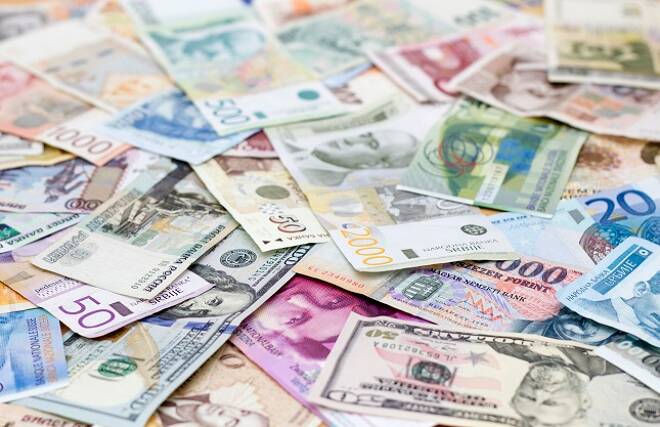Advertisement
Advertisement
Asia-Pacific Currencies Rise after US Benchmark 10-year Treasury Yield Dipped to One-Year Low
By:
The U.S. Dollar posted losses against the Japanese Yen, Australian Dollar and New Zealand Dollars amid an extended retreat in Treasury yields.
A combination of factors helped the Asia-Pacific currencies post strong gains last week, including a drop in U.S. Treasury yields, a weaker U.S. Dollar and solid economic data in the United States, China and Australia.
The U.S. Dollar posted losses against the Japanese Yen, Australian Dollar and New Zealand Dollars amid an extended retreat in Treasury yields as investors increasingly bought into the Federal Reserve’s insistence of keeping an accommodative policy stance for a while longer.
The benchmark 10-year Treasury yield dipped to a one-month low of 1.528% overnight, moving further away from over a one-year of 1.776% reached at the end of last month, even in the face of Thursday’s stronger-than-expected retail sales and employment data.
U.S. retail sales increased 9.8% last month, beating economists’ expectations for a 5.9% rise, while first-time claims for unemployment benefits tumbled last week to the lowest level in more than a year, separate reports showed on Thursday.
Australian Dollar
The Australian Dollar hit a three week high last week as Australia’s Westpac Consumer Sentiment Index climbed 6.2% to 118.8 in April, up from a month earlier. This marked the highest level since August 2010.
Australian employment data also cemented confidence that the economic recovery was in full swing. Data showed job creation again far outstripped expectations in March as unemployment dropped to a one-year low and the total number of employed passed its pre-pandemic peak.
The data from the Australian Bureau of Statistics (ABS) showed 70,700 net new jobs were created in March, double forecasts of a 35,000 gain. Unemployment dropped to 5.6%, from 5.8% in February, marking a remarkable recovery from the top of 7.5% hit last July when coronavirus lockdowns tipped the economy into recession.
Last week, the AUD/USD settled at .7734, up 0.0115 or +1.51%.
New Zealand Dollar
New Zealand’s central bank left all its current policy settings unchanged last week, saying monetary stimulus should continue to ensure its inflation and employment targets are met.
The Reserve Bank of New Zealand (RBNZ) also said it needed time to observe the impact of new housing market measures and a gradual revival in tourism on its recovering economy.
It kept the official cash rate (OCR) at a record low of 0.25%, while also continuing the NZ$100 billion ($70.55 billion) quantitative easing and Funding for Lending Program (FLP) tools, both introduced last year to support a market hit by the COVID-19 pandemic.
In other news, New Zealand’s actual business confidence figures declined in the first quarter of the year although other parameters improved, suggesting a continued recovery in sentiment, a private think tank said on Tuesday.
A net 13% of firms surveyed expected general business conditions to deteriorate compared with 6% in the previous quarter, the New Zealand Institute of Economic Research’s (NZIER) quarterly survey of business opinion (QSBO) showed.
Last week, the NZD/USD settled at .7146, up 0.0111 or +1.57%.
Japanese Yen
In Japan, Preliminary Machine Tool Orders came in at 65.0%, up from 36.7%. Core Machinery Orders, however, fell 8.5%, missing the 2.4% forecast and coming in below the previously reported -4.5%.
Japan’s core machinery orders unexpectedly fell 8.5% in February from the previous month, posting a second straight month of declines, government data showed last week.
The fall in core orders, a highly volatile data series regarded as an indicator of capital spending in the coming six to nine months, compared with a forecast of 2.8% growth in a Reuters poll of economists, the Cabinet Office data showed.
On a year-on-year basis, core orders, which exclude those for ships and electric utilities, declined 7.1% in February, versus a 2.3% gain expected by economists.
Last week, the USD/JPY settled at 108.793, down 0.866 or -0.79%.
For a look at all of today’s economic events, check out our economic calendar.
About the Author
James Hyerczykauthor
James Hyerczyk is a U.S. based seasoned technical analyst and educator with over 40 years of experience in market analysis and trading, specializing in chart patterns and price movement. He is the author of two books on technical analysis and has a background in both futures and stock markets.
Advertisement
